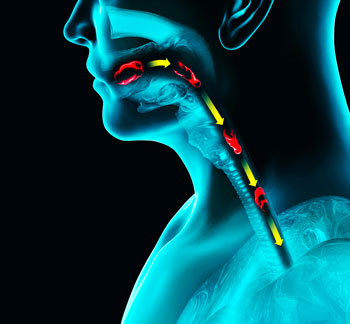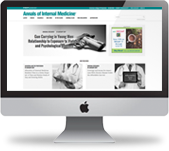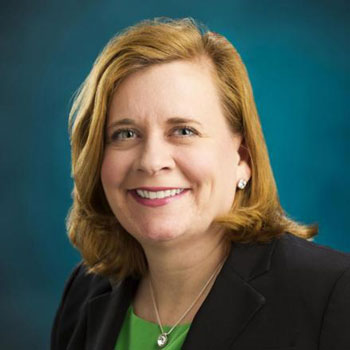Tackling burnout as an occupational phenomenon
Workplace problems need workplace solutions, rather than the frequent, well-intended, and misguided workplace programming that tries to emphasize making already resilient physicians tougher.
All happy families are alike; each unhappy family is unhappy in its own way.” I first read this when I was starting medical school and decided to read Tolstoy's “Anna Karenina.” Although I only made it about halfway through before studying took up nearly all my time, I have thought of that line often since then. I've talked often about this quote during my years as a primary care physician and now as a hospitalist when speaking with my peers about physician burnout.
Of course, I've thought of it because the practices where physicians were happiest could refer to how much they liked their patients and team and how smoothly their clinical environment worked. But the places where physicians were burned out and unhappy usually had different drivers depending on the practice setting, even if in the same city, the same health system, or within different departments of the same building.

Burnout is all over the lay press, and there is a recent relative explosion of peer-reviewed literature on the scope and drivers of physician burnout, as well as interventions to reduce it. But no matter what the cause is, all physicians deserve to feel professionally rewarded and valued. “Not having burnout” is just too low of a bar.
The Agency for Healthcare Research and Quality describes burnout as “a long-term stress reaction marked by emotional exhaustion, depersonalization, and a lack of sense of personal accomplishment.” However, discussing burnout is complicated because many people do so colloquially and at times use the term interchangeably with other terms such as fatigue or depression. We all want physicians, just like everyone else, to be well rested and to receive mental health care, but it's important to be clear that burnout is an occupational phenomenon (as described by the World Health Organization). This underscores that burnout is not a personal failing and arguably is a not unexpected response to disorganized, time-pressured workplaces that often lack community and human-centeredness. As a logical extension of this, workplace problems need workplace solutions, rather than the frequent, well-intended, and misguided workplace programming that tries to emphasize making already resilient physicians tougher.
I believe there is a moral imperative for health care to address physician burnout. This stems from our duty to care for each other (including our learners and interprofessional colleagues) as part of a community within the health professions. That physician burnout has been tied to increased medical errors and that patients often care deeply when physicians have burnout underscore the imperative that we address this. And since we all want patients to be able to have doctors to care for them, we should all understand that the distressing number of physicians who are burned out and consequently cutting back on hours negatively affects patient access to care.
Hopefully we all agree that this must be urgently addressed for the sake of our patients, our peers, and our profession. So, what to do? Even if we agree that there are different solutions within different workplaces (or, extending the literary metaphor, different unhappy families), it is often hard to know where to start. I believe it is hard to go wrong starting with good-faith efforts, however seemingly small, that respond to problems identified by affected physicians that are known drivers of burnout, such as culture, workload, disorganization, or pace. Such efforts could be inspired by issues discovered in roundtables, surveys, successful efforts elsewhere, or existing literature on best practices.
For example, workplaces challenged by professional isolation could start with peer support groups to build community, whereas workplaces where the EMR is driving dissatisfaction could start with templates and order sets that reduce click burden and protected time for a meaningful EMR orientation, and workplaces where burnout is the result of work interfering with home could start with piloting a more flexible schedule (such as early or late starts). Any of these could move on to more resource-intensive strategies such as hiring scribes, providing professional coaching, or lengthening appointment visits to improve quality. In most cases, patients will be our strongest allies for adopting such changes, because they want physicians who are humanistic (and have bandwidth to show this), who don't have to stare at the screen during a visit, and they themselves often want schedule flexibility.
To identify solutions, I hope that every reader checks out ACP's Physician Well-being and Professional Fulfillment initiative. This long-standing work is the result of a 2016 resolution from the Council of Early Career Physicians that was approved by the Board of Governors and then the Board of Regents. The work has evolved to incorporate a general framework of fostering local communities of well-being, promoting individual well-being, and, crucially, improving the practice and organizational environment.
ACP's work to foster local communities of well-being is centered on developing trained Well-being Champions, volunteer leaders who have received professional development in combating burnout and who lead activities at the local level, such as in workshops, peer support, medical humanities, and coaching. These endeavors at times overlap with ACP's work to promote individual well-being, which became particularly prominent during the worst of the COVID-19 pandemic. During that time, ACP rolled out the I.M. Emotional Support Hub, which includes resources to support one's own mental and physical health as well as those of colleagues.
Last, in recognition that any professional well-being work must address burnout as an occupational phenomenon, ACP has extensive resources to help improve the practice and organizational environment. This work includes evidence-informed resources for improving workflows to reduce frustratingly inefficient processes, adapting quality improvement initiatives to enhance sustainability, and creating a more inclusive culture, as well as practical steps that could help keep us in the workforce. This last dimension of ACP's approach includes one easy yet important win: reducing the stigma associated with seeking and receiving mental health care, including providing tools to help physicians advocate within their organizations to revise credentialing applications to remove questions about mental health and to add a statement encouraging self-care.
There is so much to do to go beyond beating burnout and restore our connections with patients and each other. That can only happen if we fix our workplaces. I know you already have a full plate. I also know that this type of physician advocacy can be restorative and hope we can support each other in starting the work. We deserve nothing less.





